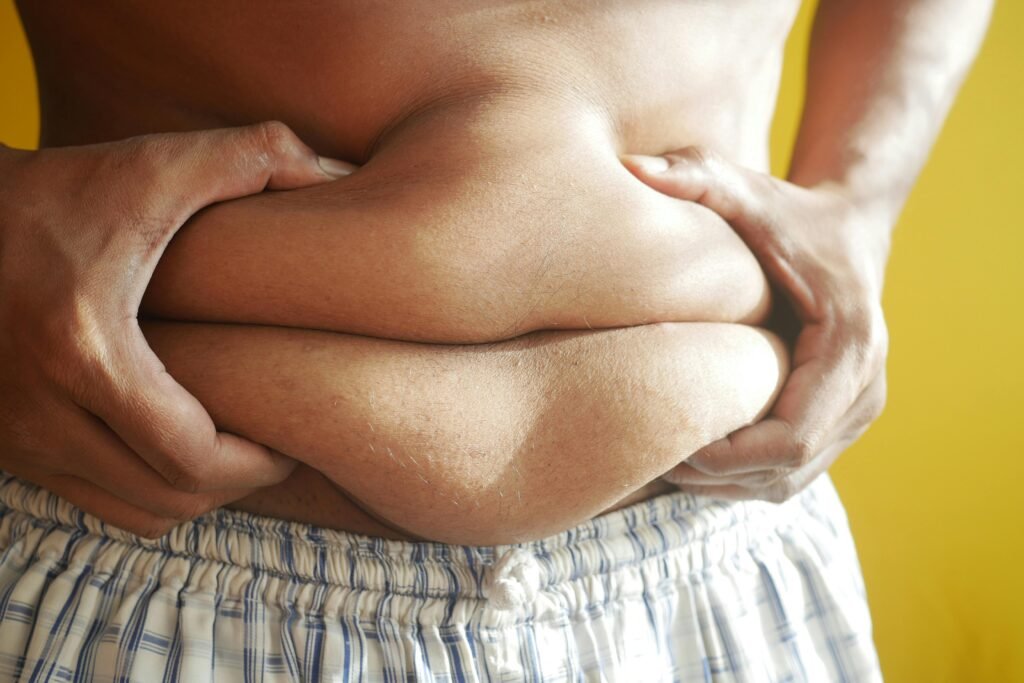Introduction
Belly fat, specifically visceral fat, is more than an aesthetic concern; it’s linked to health risks like heart disease, type 2 diabetes, and chronic inflammation. While it can be challenging to lose, a combination of dietary changes, exercise, and lifestyle modifications can help target and reduce belly fat effectively. This guide explores science-backed methods to tackle belly fat for a healthier body.
1. Reduce Sugar Intake
Excess sugar intake contributes to abdominal fat accumulation, particularly from sugary drinks and processed foods. High sugar intake leads to insulin resistance, a condition that promotes fat storage in the abdomen. To reduce belly fat:
Limit sugary drinks, even fruit juices.
Choose whole foods over processed snacks.
How It Works: Reducing sugar improves insulin sensitivity, lowering fat storage, especially around the belly.
References:
Aro, A., et al. (2021). Impact of Excessive Sugar Consumption on Insulin Resistance and Abdominal Fat. American Journal of Clinical Nutrition.
2. Engage in Regular Exercise
Both cardio and strength training are vital for burning belly fat. Aim for at least 150 minutes of moderate-intensity exercise weekly. A combination of aerobic activities and weight training is most effective:
Cardio: Running, cycling, and brisk walking boost heart health and burn calories.
Strength Training: Building muscle mass increases resting metabolism, helping to burn fat even at rest.
Core-Targeting Exercises: Try crunches, planks, and leg raises to tone and strengthen your core.
How It Works: Physical activity increases energy expenditure, supports muscle growth, and enhances fat burning.
References:
MacDonald, I.A., et al. (2020). Exercise and Fat Metabolism: Mechanisms and Benefits. American Journal of Clinical Nutrition.
3. Opt for a High-Protein Diet
High-protein diets are linked to reduced abdominal fat. Protein boosts metabolism, supports muscle growth, and keeps you fuller longer. Include sources like lean meats, eggs, legumes, and dairy.
How It Works: Protein increases thermogenesis, promoting fat oxidation and reducing hunger, which aids in overall fat loss.
References:
Protein Intake and Abdominal Fat Loss: Evidence from Randomized Trials – Journal of Nutrition
Mikkelsen, P.B., et al. (2017). The Role of Protein in Metabolism and Satiety. Nutrition Reviews.
4. Try a Low-Carb Diet
Reducing carb intake can significantly impact fat loss. Focus on complex carbs from whole grains and vegetables rather than refined carbs, which can spike blood sugar.
How It Works: Low-carb diets stabilize blood sugar levels, reducing insulin spikes and helping the body use stored fat for energy.
References:
Low-Carbohydrate Diets and Fat Loss: A Comprehensive Review – Nutrition Reviews
Willett, W.C., et al. (2020). Effects of Low-Carb Diets on Insulin Sensitivity and Fat Loss. JAMA.
5. Manage Stress
Chronic stress is associated with belly fat due to elevated cortisol levels, which can lead to fat storage around the abdomen. Techniques to manage stress include:
Meditation and Yoga: These practices calm the nervous system, reducing cortisol.
Physical Activity: Exercise is a natural stress reliever that promotes endorphin release.
How It Works: Lowering cortisol levels through stress management helps prevent fat accumulation in the abdominal area.
References:
Cohen, S., et al. (2020). Stress Management and Fat Reduction: Mechanisms and Interventions. Psychosomatic Medicine.
6. Limit Alcohol Consumption
While occasional drinks are generally fine, heavy alcohol intake is linked to increased belly fat. Limiting alcohol to moderate levels helps reduce excess calorie intake and potential fat gain.
How It Works: Alcohol adds empty calories, disrupts metabolic processes, and can encourage fat storage.
References:
Alcohol Consumption and Abdominal Fat: A Review of Evidence – Journal of Nutrition
Suter, P.M., et al. (2021). The Effects of Alcohol on Metabolism and Fat Storage. American Journal of Clinical Nutrition.
7. Get Adequate Sleep
Insufficient sleep is linked to weight gain and abdominal fat. Aiming for 7-8 hours of quality sleep helps regulate hunger hormones and supports weight management.
How It Works: Quality sleep helps balance ghrelin and leptin levels, hormones that regulate appetite, reducing the tendency to store fat.
References:
The Role of Sleep in Abdominal Fat Accumulation and Weight Management – Journal of Sleep Research
St-Onge, M.P., et al. (2016). Sleep Duration and Quality: Their Relationship to Abdominal Fat Accumulation. Sleep Health.
Conclusion
Losing belly fat requires a well-rounded approach, combining diet, exercise, stress management, and sleep. These evidence-based methods can help you effectively manage abdominal fat and improve your overall health. Staying consistent and consulting healthcare professionals when needed can support you in achieving sustainable results.



